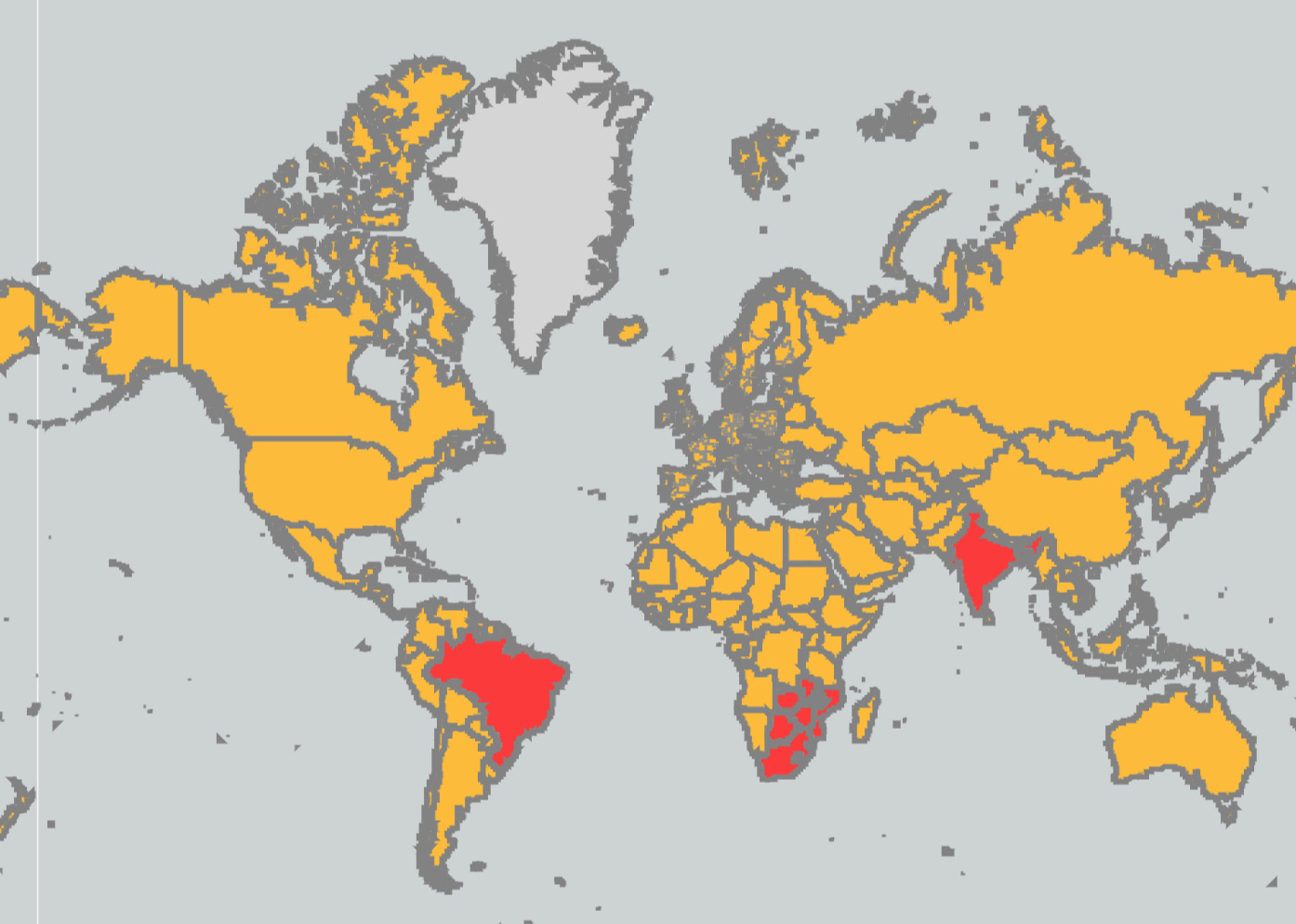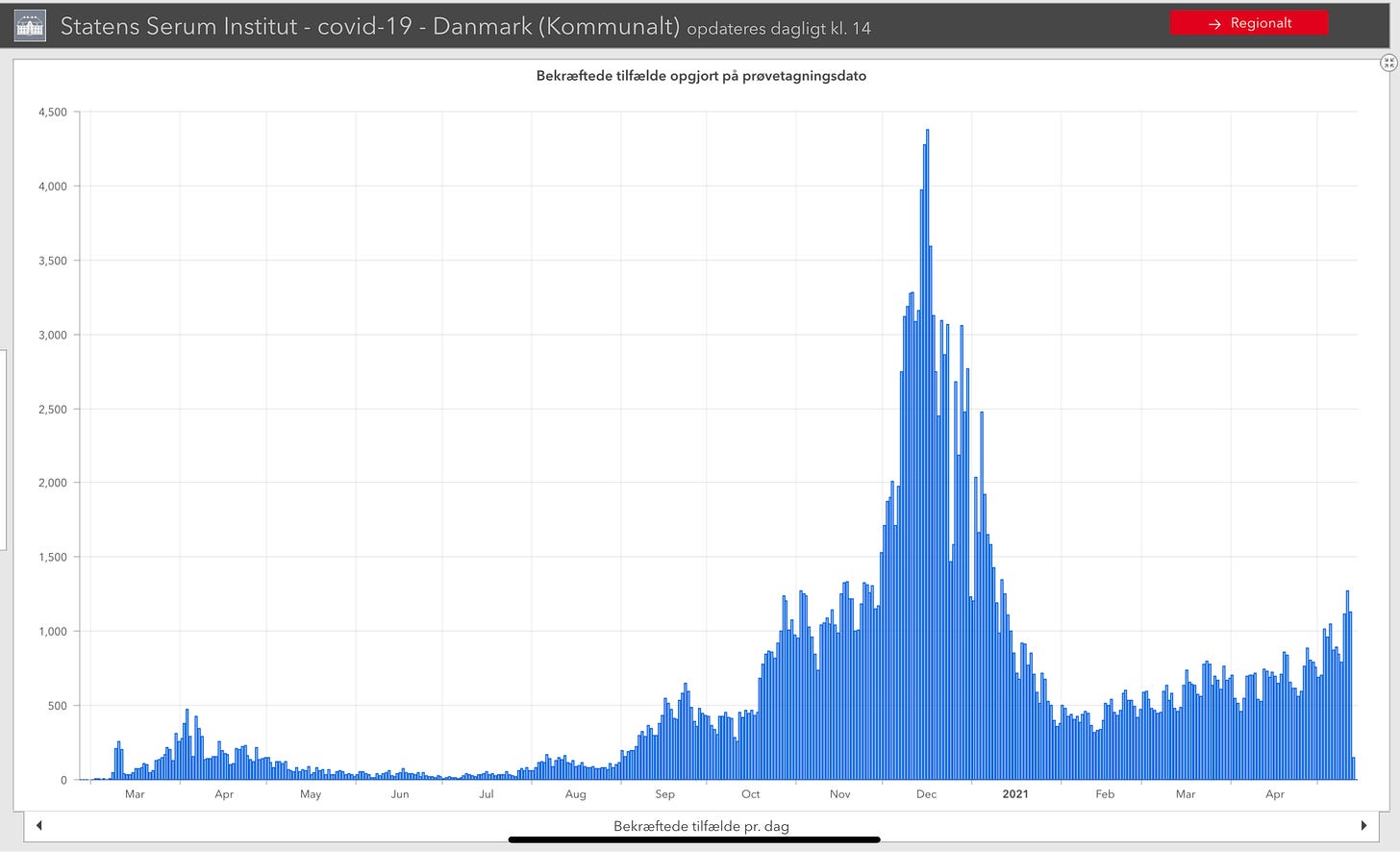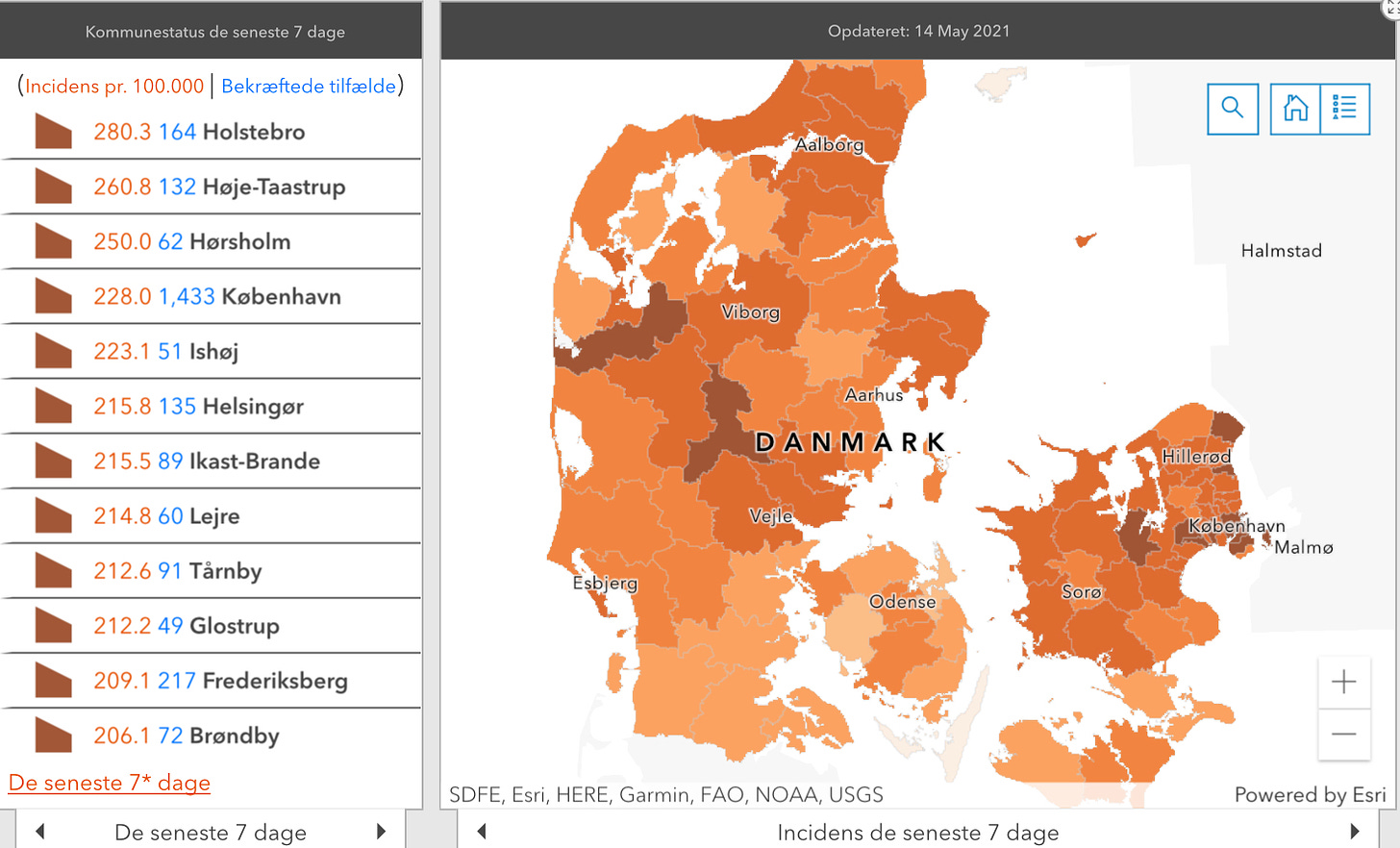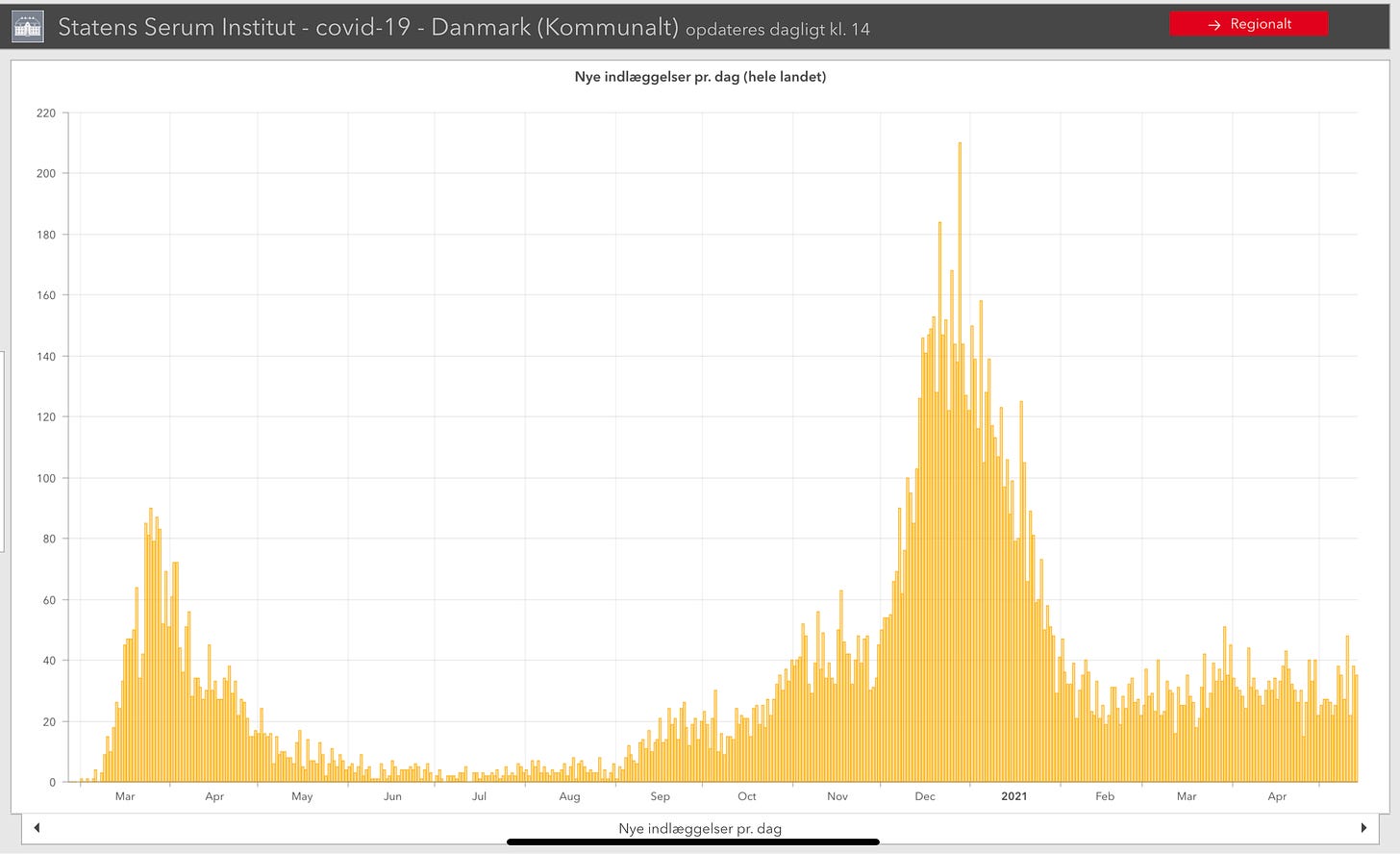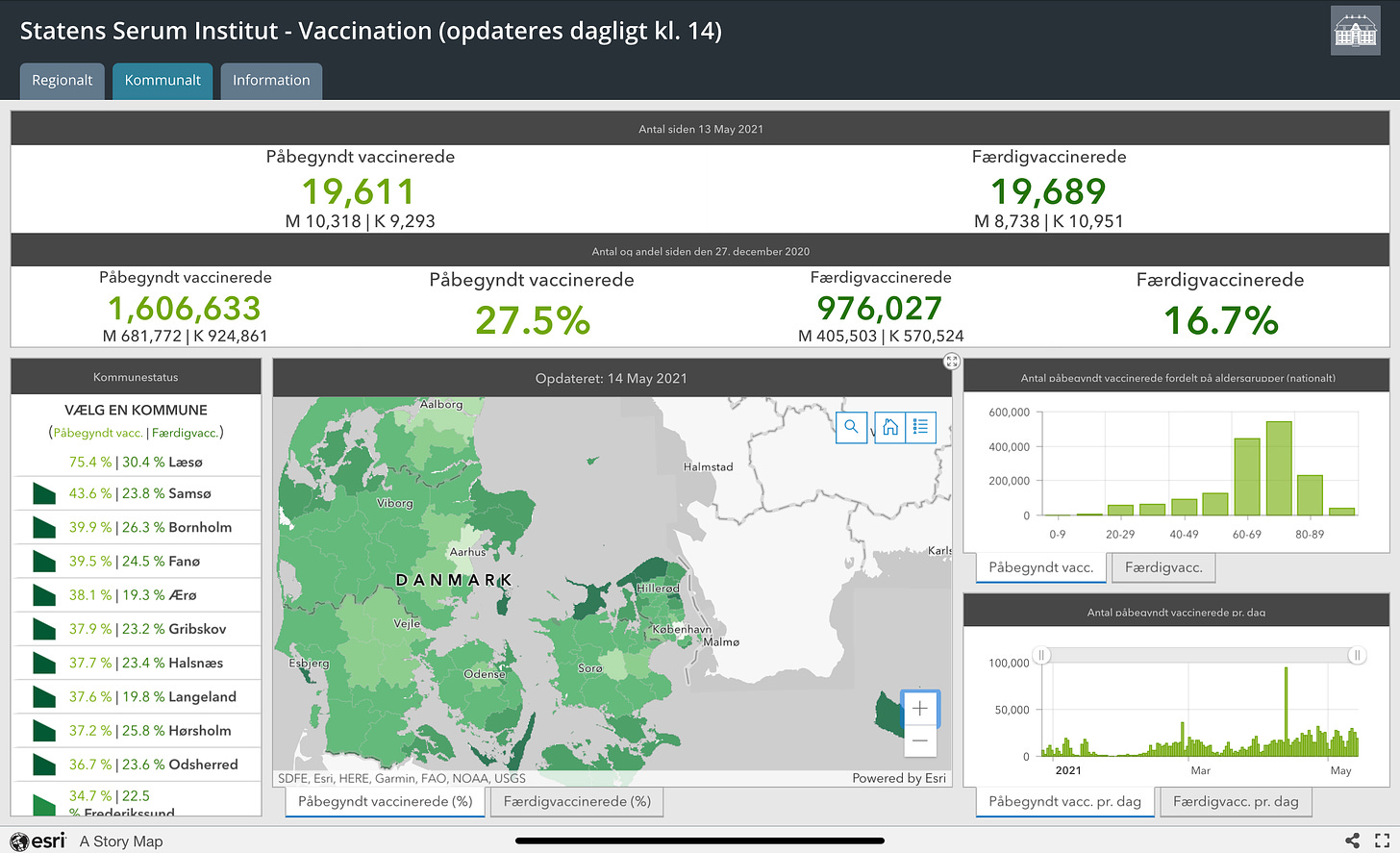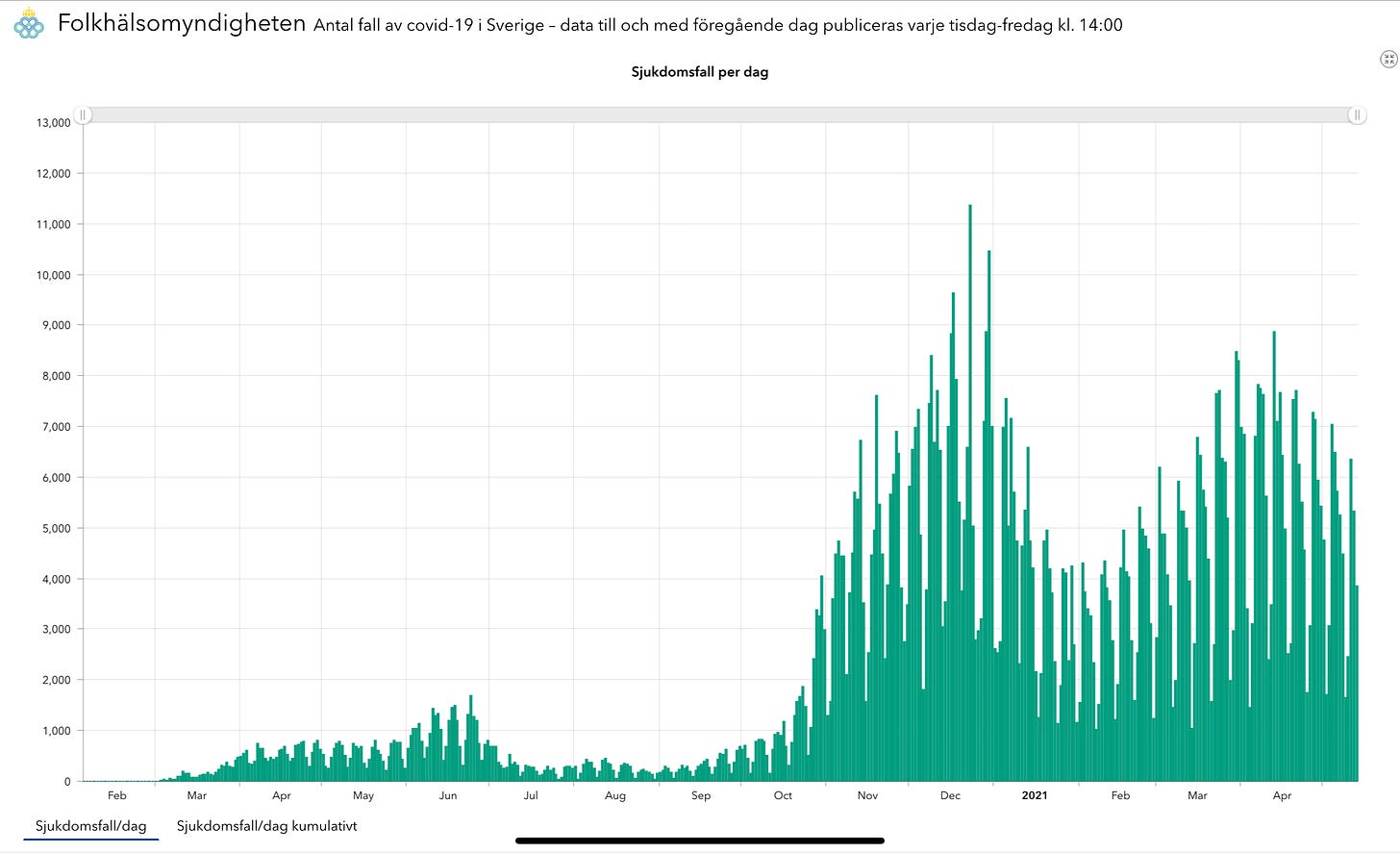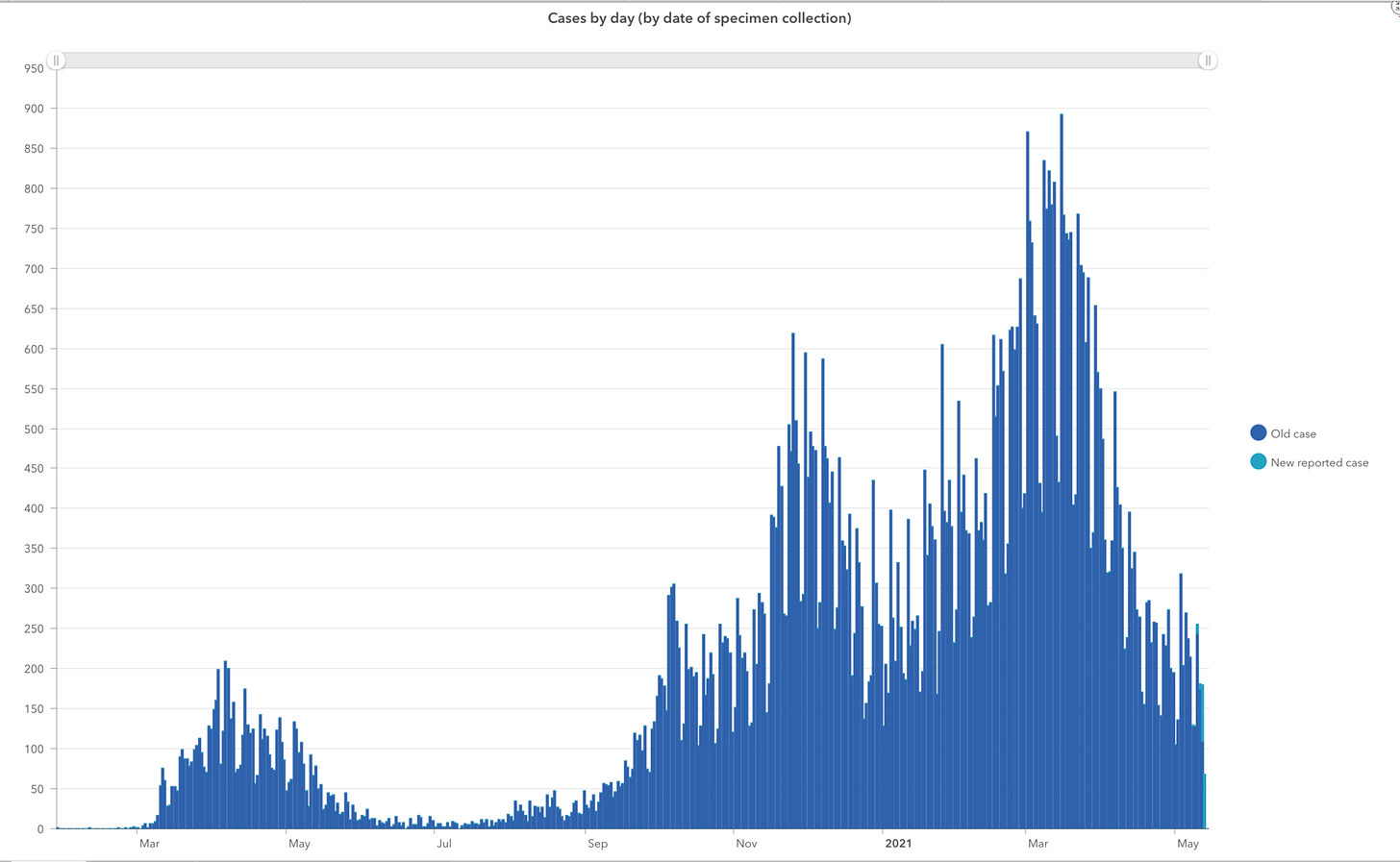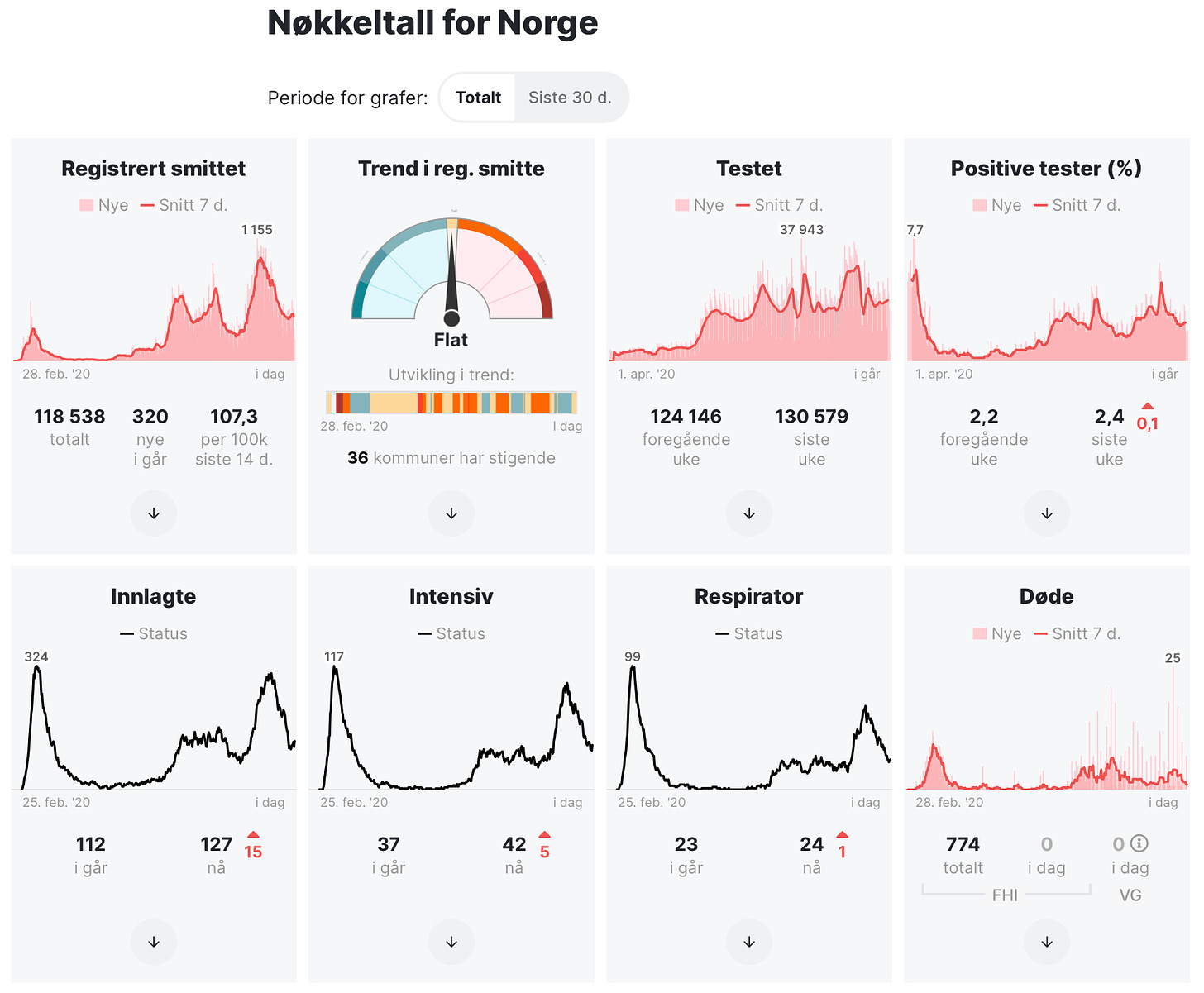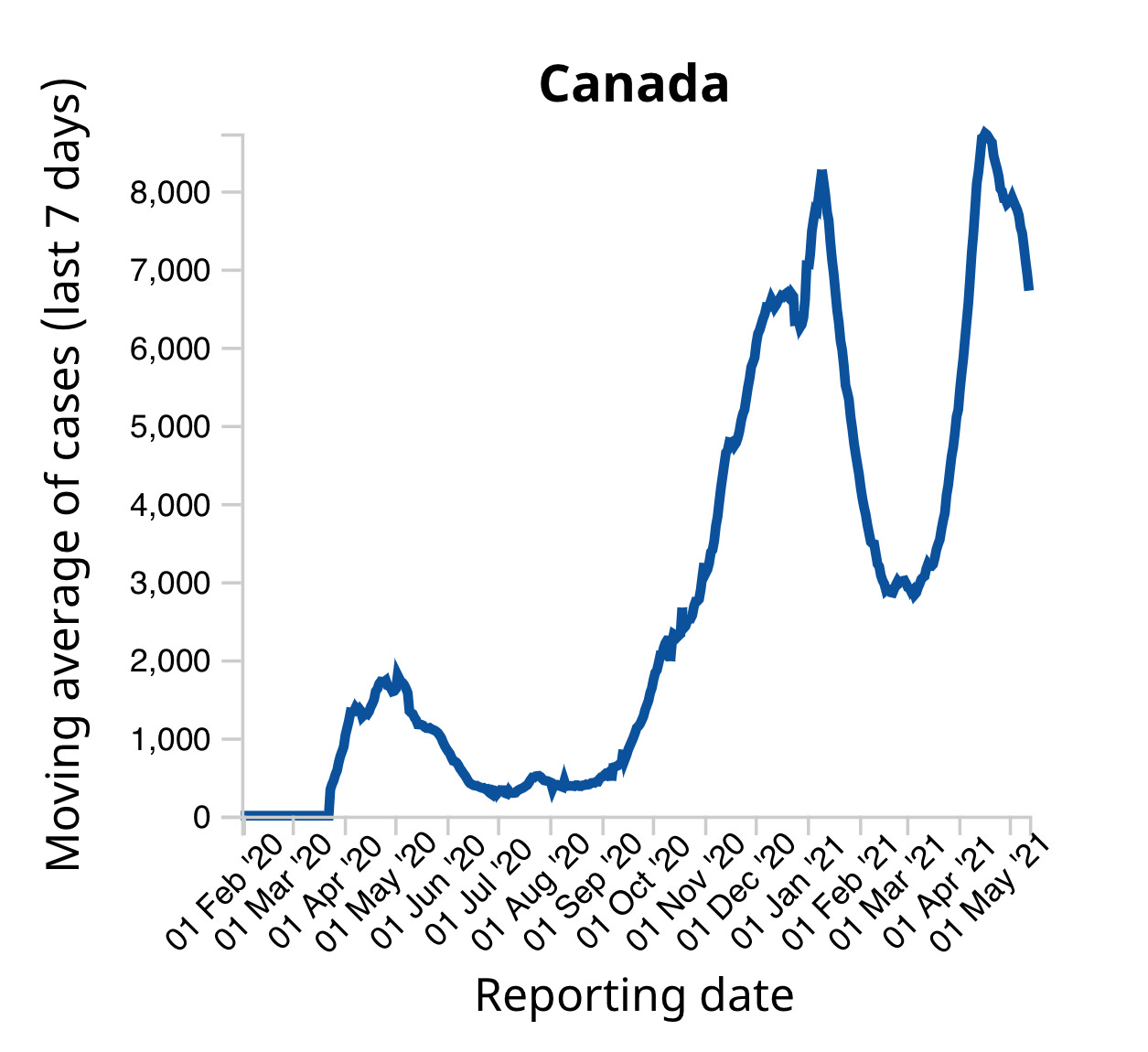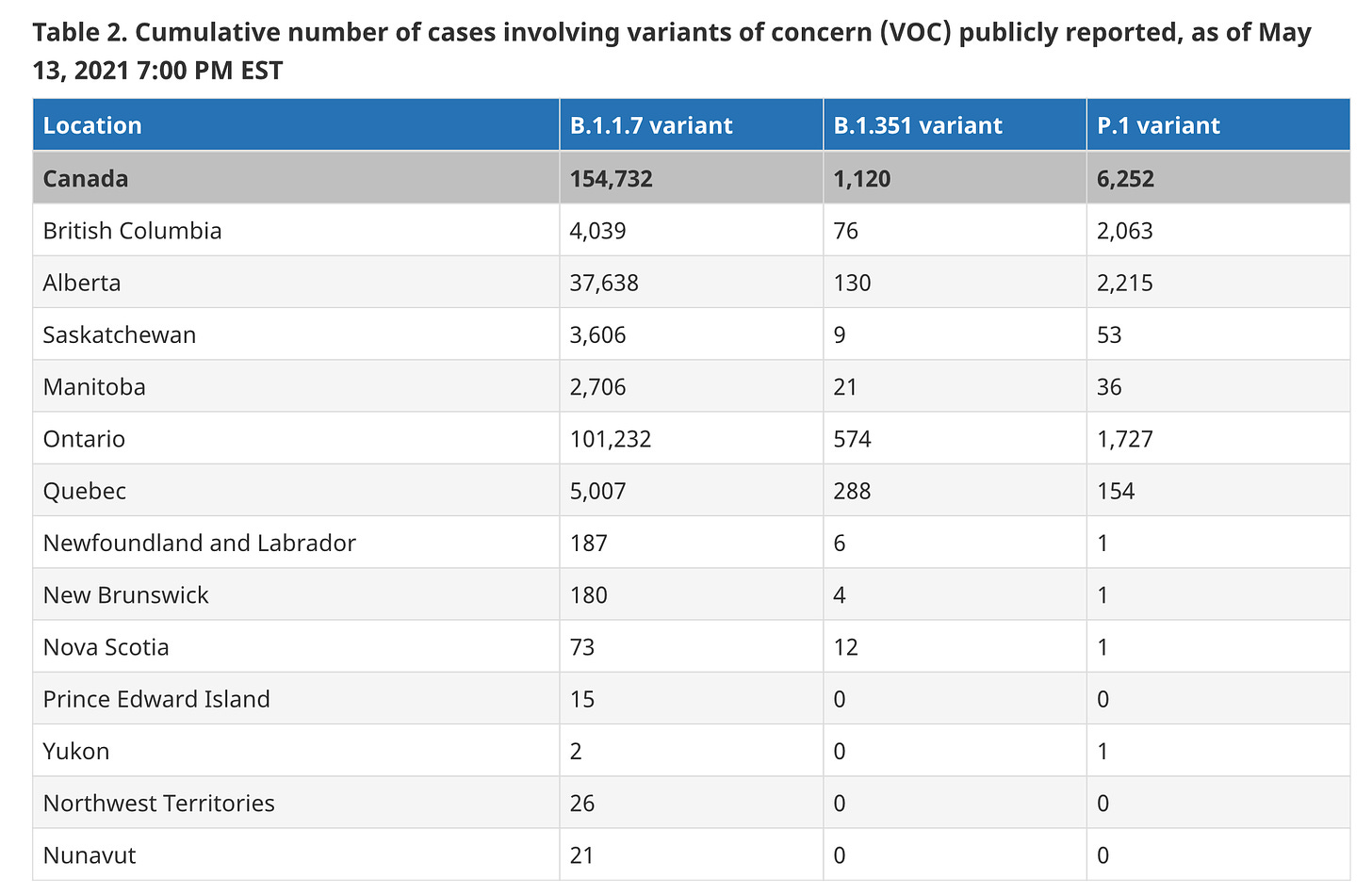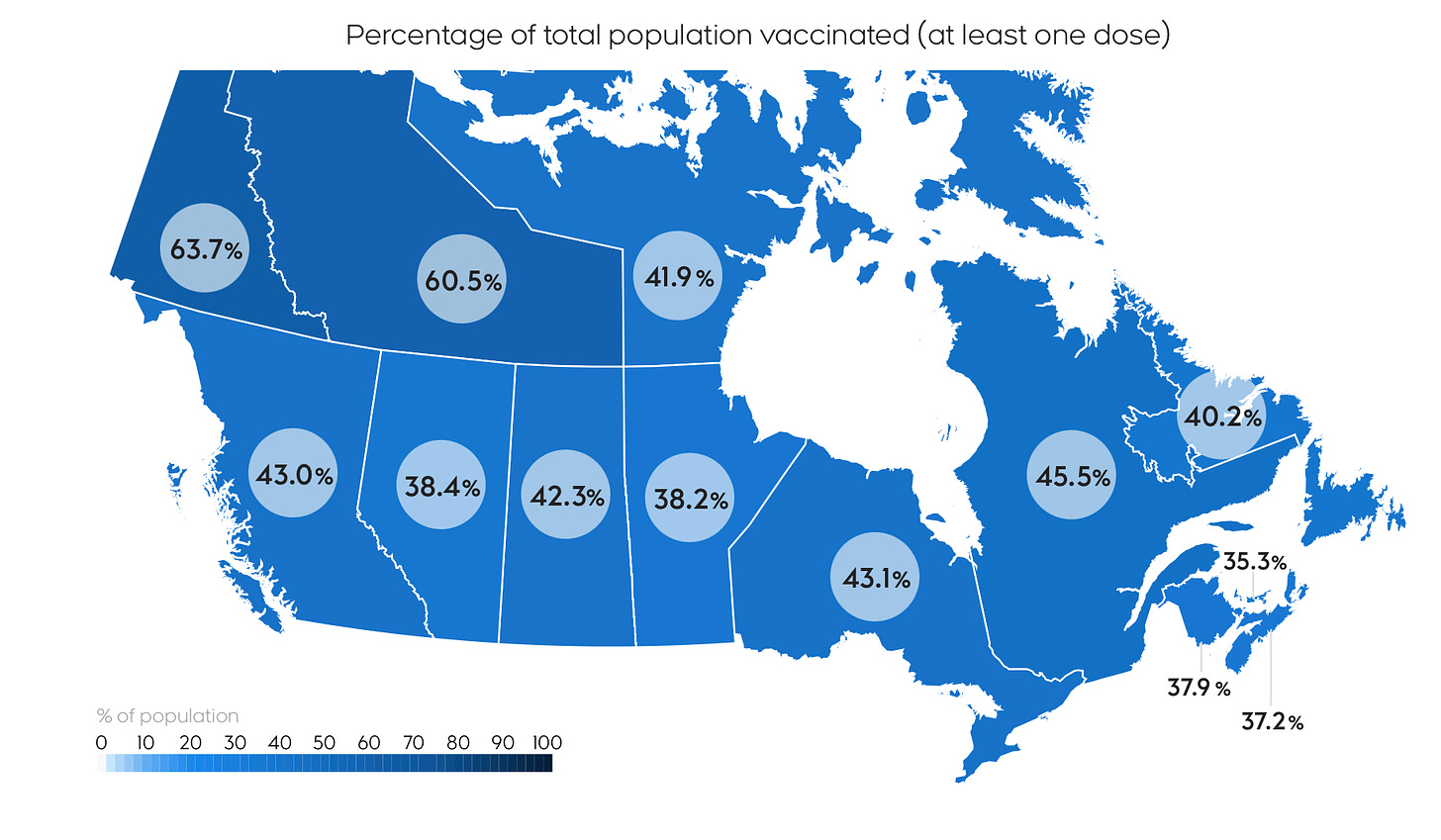The Evening Report - May 14th
Alarm raised about the India variant claiming it is the most infectious one yet
🇬🇧🦠
The United Kingdom’s Scientific Pandemic Influenza Group on Modeling is sounding a warning about the India COVID variant B.617.2. It has determined that it has a "significant growth advantage" over the already much more infectious U.K. variant of likely “more than 50%.” It says the variant, which is already spreading across Great Britain, has the possibility of triggering “a very large increase” of infections that could “put unsustainable pressure on the NHS.”
Its modeling has concluded that if a new even more infectious variant is circulating, and restrictions continues to be eased, there is the potential for a surge in hospitalizations on par with or perhaps larger than any infection wave seen yet.
It says there is significant potential in targeting variant hot spot areas with increased vaccinations but it “must be started as soon as possible" to work.
Despite the warning sounded by the group British Prime Minister Boris Johnson said restrictions would continue to be eased as planned although he did add a caveat.


🇩🇰
Denmark has begun to ease COVID related travel restrictions beginning today. Danish Foreign Affairs has also reassessed the colour coded COVID risk level for other countries.
Nepal has now been designated a COVID red zone joining India, Brazil, and a number of African countries and regions. Danish Foreign Affairs says the infection surge that hit India has overflowed across the border to Nepal. It says there is concern the B.1.617 variant is present in Nepal and spreading. All travel, including business travel, is discouraged to Nepal. There is also a stricter list of recognizable purposes for entry into Denmark from Nepal. Travelers from there, and the other ‘red’ countries, also face, mandatory testing and quarantines upon arrival into Denmark.
Other changes include Malta going from orange to yellow. As well regions in Spain and Portugal are also now deemed yellow.
The Spanish regions now referred to as ‘yellow’ low-risk regions are Asturias, the Balearic Islands (Mallorca, Ibiza, etc.), Ceuta, Extremadura, Galicia, the Canary Islands (Gran Canaria, Lanzarote, Tenerife, etc.), Murcia and Valencia.
In Portugal, it is the archipelago of the Azores and the island of Madeira in the Atlantic Ocean.
In all cases changes will take effect as of tomorrow, Saturday 15 May at 4 p.m.
Travelers from yellow countries do not have to have a negative test to fly to Denmark nor do they have to isolate when they arrive.
The requirement to have a recognizable purpose to enter Denmark is also abolished for all foreign permanent residents in orange E.U. and Schengen countries.
You can read about all the changes and eased restrictions on our full report in Informeret published yesterday HERE.
-
DR has confirmed with the Ministry of Foreign Affairs that vaccinated and previously infected people in Denmark can travel by air into Germany without having to be tested or having to quarantine.
To prove previous infection, you must be able to present a positive test result, with a PCR test, that is at least 28 days and at most six months old.
-
The Danish Agency for Patient Safety says it is seeing “a marked increase in the [COVID] incidence for young people between 15 and 24 years old. Among other things, we see outbreaks related to schools, colleges as well as social and festive activities in young people's circle of acquaintances.” It is urging everyone, and especially young people, to follow all coronavirus rules and restrictions.
-
Denmark reported 1,355 COVID infections yesterday and another 951 infections and no coronavirus deaths today as the infection curve keeps pushing upward.
Yesterday there were 531,111 corona tests done, 197,870 PCR and 333,241 rapid, for a (PCR only) positivity percentage of 0.48%.
Another sign of spreading infections is the increase in the number of kommunes above the COVID incidence rate of 200 infections per 100,000 people, which has grown to 12.
Hørsholm remains the only kommune that is under a lockdown.
-
COVID hospitalizations (163) increased (+9) while the number of infected in an ICU (33) edged downward (-3) of those the number on a ventilator (23) inched up (+1).
On the vaccination front, to date there have been 1,606,633 1st dose vaccinations (27.5% of the population) while 976,027 people (16.7%) are now fully vaccinated.
Yesterday there were 39,300 total vaccinations done.
🇸🇪
Sweden has added 9,192 infections and another eight virus deaths since its last update on Wednesday.
To date 3,194,265 1st dose (39% of the population) and 983,423 2nd vaccine doses (12%) have been administered.
-
Sweden is phasing out the AstraZeneca vaccine according to Radio Sweden. It reports deliveries from AstraZeneca will continue to arrive for another three weeks and than that will be it. Once shipments stop so will use of the AstraZeneca vaccine to administer any first dose vaccinations. The outlet quotes Swedish Vaccine Coordinator Richard Bergström as saying Sweden will donate what AstraZeneca doses they have to other E.U. countries.
🇫🇮
Finland has registered 416 infections and one new corona death since Wednesday.
COVID hospitalizations (122) are up (+8) while ICU numbers (28) are also up (+4).
To date 2,031,941 1st dose (36.5% of the population) and 246,813 2nd vaccine dose (4.4%) have been administered
-
Finland is geographically targeting vaccinations at its hardest hit regions. Next week it will begin ramping up vaccinations in Päijät-Häme and Southwest Finland as both regions have COVID infection incidence rates per 100,000 people of over 100. An extra 13,200 vaccine doses will be targeted at those two regions.
The Finnish Institute for Health’s Dr. Emma Kajander:
“Incidence elsewhere in the country is below this 100 infection incidence threshold, so no emphasis will be placed on these areas. However, the pace of vaccination continues to be good in these areas as well.”
The agency expects to continue targeting vaccines at the regions with the most infection activity until at least the end of the month.
🇳🇴
Norway has added 781 infections and had no new virus deaths since Wednesday’s update.
COVID hospitalizations (127) are up (+15) ICU numbers (42) also increased (+5) while the number of people on a ventilator (24) inched up (+1).
To date 28.88% of Norwegians have one vaccine dose and 10.65% have had both.
-
Vaccine uptake in Norway has been very high according to the National Vaccination Register, SYSVAK.
Data from the register on vaccination by age and gender who have had at least one dose shows:
Women
Over 80 years old - 91%
75-84 years - 96%
65-74 years - 90%
Men
Over 80 years - 93%
75-84 years - 97%
65-74 years - 90%
The Norwegian Institute of Public Health expects to receive 5.7 million vaccine doses during the summer months.
-
A new study from the University of Oxford has found combining vaccines from AstraZeneca and BioNTech/Pfizer does not reveal any new serious or previously unknown side effects.
The Norwegian Institute of Public Health says this supports its decision to substitute Pfizer as a 2nd vaccination dose for those who have had AstraZeneca as a first dose. Norway has permanently removed AstraZeneca from its vaccination program due to rare but potentially fatal side effects.
However NIPH Chief Physician Sara Viksmoen Watle warns the combination does have a bit of a kick.
“The study shows that troublesome but transient side effects are common after the second dose for those who receive a combination of the vaccines from AstraZeneca and BioNTech/Pfizer. These are known side effects that we have reported before, but which occur more frequently in this group.”
The results are published in a peer-reviewed research letter in the Lancet. The study found that headaches, chills, fatigue, and muscle pain occurred more frequently among those who received a combination of the two vaccines. However the symptoms passed after a few days.
The study is also working to determine efficacy against the coronavirus by combining the two vaccines from the first to the second shot but results aren’t due until sometime this summer. Several Norwegian studies are also underway to try and answer the efficacy question.
You can read the study in The Lancet HERE.
About 135,000 people in Norway, most healthcare workers, had their first AstraZeneca dosen before the vaccine was shelved. They will now be offered an mRNA vaccine as a second dose.
🇬🇧
An analysis by Public Health England has determined that at least 33,000 hospitalizations were prevented and about 11,700 lives were saved by the country’s massive vaccination effort. It says the impact on hospitalizations and deaths that might have happened otherwise were largely in older age groups who are now vaccinated.
💉
An article has been published in The Lancet with a scathing assessment of the Russian Sputnik V COVID vaccine.
“Restricted access to data hampers trust in research. Access to data underpinning study findings is imperative to check and confirm the findings claimed. It is even more serious if there are apparent errors and numerical inconsistencies in the statistics and results presented. Regrettably, this seems to be what is happening in the case of the Sputnik V phase 3 trial.”
It cites problematic data, a lack of transparency, a lack of crucial information, and that any study findings in the vaccine’s clinical trials having to be approved first by Russia’s “so-called security department” in raising serious concerns about the vaccine and its efficacy.
You can read the rather searing article HERE.
-
A British study released today has concluded that more antibodies are produced when a second Pfizer vaccine dose is delayed. The study, which has yet to be peer reviewed, found by pushing off a second Pfizer dose to 12 weeks after the first the antibody response increased three-and-a-half fold among older people. The study examined 179 people between 80 and 99 years of age.
🇨🇦
Manitoba, Nova Scotia, and Newfoundland and Labrador have now joined other provinces in no longer offering the AstraZeneca vaccine due to growing concerns about rare but potentially fatal side effects. British Columbia and Saskatchewan have also stopped offering first doses of AstraZeneca but they are citing a lack of supply not side effects.
-
Yesterday Canada reported 6,615 infections while suffering another 60 coronavirus deaths as the latest variant driven infection wave ease, at least on a national level.
Both Alberta and Ontario continue to amass corona variants, especially the U.K. and Brazilian P1 variants, at an alarming rate.
On the vaccination front to date 16,193,359 1st dose vaccinations (42.61% of the population) have been administered while 1,359,210 people are now fully vaccinated.
Ontario reported 2,759 infections and 31 deaths on Thursday. As for today Health Minister Christine Elliott has tweeted “Ontario is reporting 2,362 cases of COVID19 and over 44,000 tests completed. Locally, there are 691 new cases in Toronto, 563 in Peel, 224 in York Region, 148 in Durham and 112 in Hamilton. As of 8:00 p.m. yesterday, 6,771,128 doses of the COVID-19 vaccine have been administered.” There were also 26 more deaths.
Quebec reported 838 infections and another eight corona deaths today.
In Atlantic Canada, Nova Scotia recorded 117 infections. Newfoundland and Labrador had six. New Brunswick five.
Manitoba registered a record high number of infections yesterday with 560 along with three more virus deaths.
There were
Alberta recorded 1,558 new infections and another nine corona deaths yesterday.
B.C. had 587 infections and five deaths yesterday. The province has seen a second case of someone suffering the rare but severe side effects after receiving an AstraZeneca vaccination.




